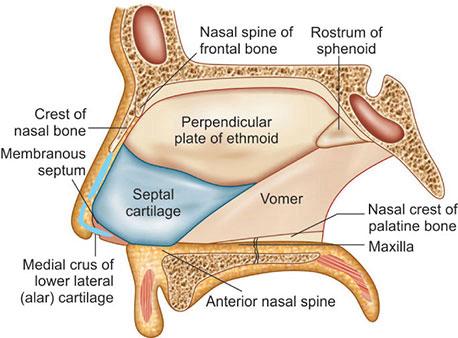



Safe, Artful Transformations for Your Face
Precision. Passion. Perfection
Delivering Excellence in Facial Plastic Surgery
Listening, Understanding, Creating
SEPTOPLASTY: A CLOSER LOOK
WHAT IS NASAL SEPTUM?
The nasal septum is a critical structure in the nose, acting as the central partition that divides the two nasal cavities. Ideally, it should sit centrally, but for various reasons, it can deviate to one side or become deformed, leading to a range of complications. For those suffering from the complications of a deviated septum, septoplasty can offer a transformative improvement in their quality of life.


WHAT CAUSES SEPTAL DEVIATION?

This can occur due to a variety of reasons:

CONGENITAL
Some people are born with a deviated septum because the nose did not develop straight while they were growing in the womb.
DEVELOPMENTAL
Occasionally, the septum may bend as the nose grows, leading to a deviated septum in adolescence.
INJURY OR TRAUMA
A common cause is a nose injury which can occur from accidents, sports, fights, falls, or any impact to the face. Such injuries might knock the nasal septum out of position.
COMPLICATION OF MEDICAL INTERVENTIONS
Certain medical interventions like rhinoplasty or sinus surgery, may lead to septal deviation.
It’s also worth noting that a slightly deviated septum is fairly common, and not everyone with a deviated septum will experience symptoms or require treatment. However, if it causes problems such as nasal obstruction, snoring, or recurrent sinus infections, it may need to be corrected with a surgical procedure known as septoplasty.
WHY IS SEPTOPLASTY NEEDED?
NASAL OBSTRUCTION
The most common symptom leading to septoplasty is difficulty in breathing. A deviated septum can obstruct one or both nasal passages, making it hard for air to flow freely. This can be particularly noticeable during physical activity or at night, leading to snoring or sleep disturbances.
Recurrent Sinus Infections
The nasal passages play a role in draining the sinuses. A deviation can hinder this drainage, creating a stagnant environment where infections can thrive.
Nosebleeds
A deviated septum can cause turbulence in the airflow, drying out the nasal membranes. This dryness can lead to frequent nosebleeds.
Facial Pain and Headaches
Some individuals experience referred pain from their deviated septum, which can manifest as facial pain or tension headaches.
As an adjunct to other procedures
Septoplasty may be needed as part of access for endoscopic sinus surgery (FESS), Dacryocystorhinostomy (DCR) or trans-sphenoidal pituitary surgery.
Read more to know about septoplasty techniques and the procedure in greater detail>> Link to Septoplasty blog here.


